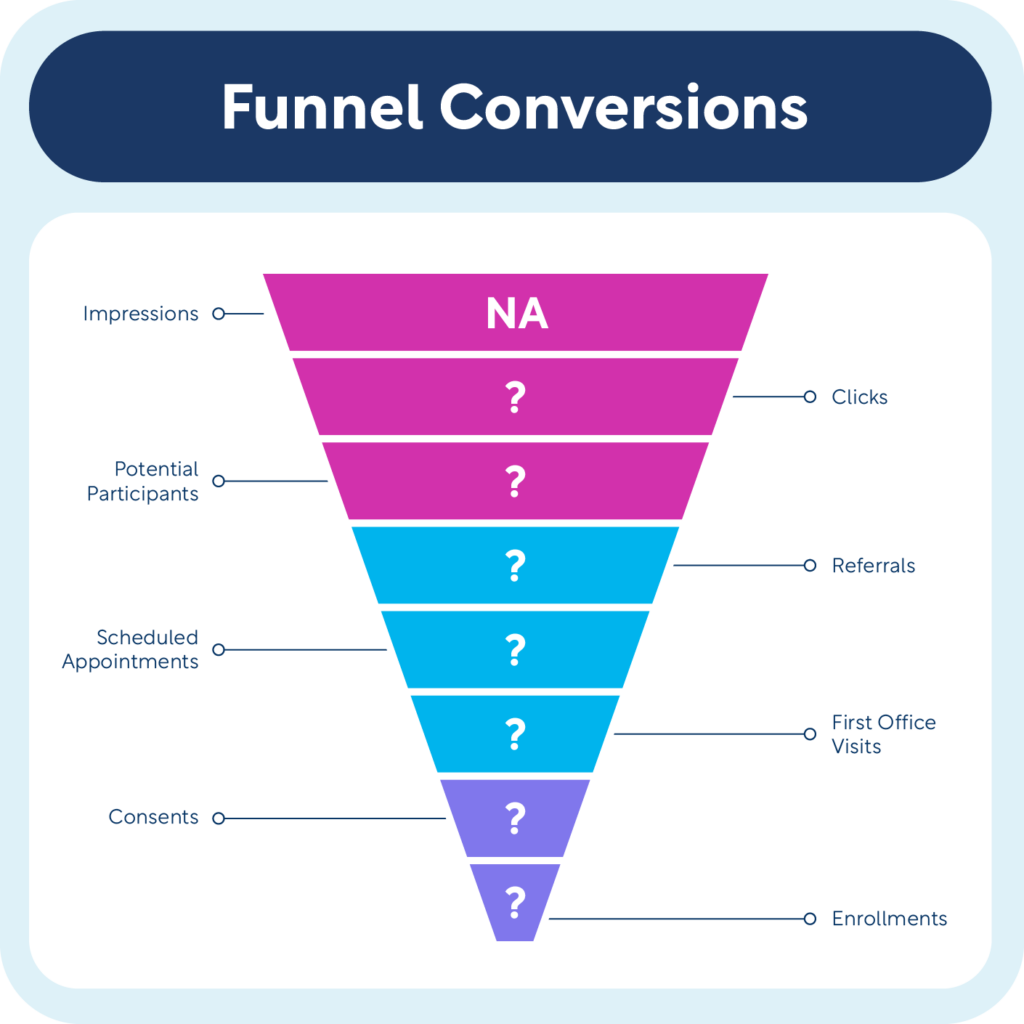Media outreach is a great tool to connect large groups of potential participants to actively enroll in clinical research studies. No matter how broad the outreach or how innovative the execution, to find enrollment success, outreach strategies must connect with the personal healthcare journey of each participant, explains Tyler Bye, Director of Site Solutions and Product Strategy at WCG.
Just as important, those strategies must always align to study timelines. If time isn’t a consideration, any recruitment strategy can meet its goals. “But we often don’t have infinite timelines, so we must determine the end goal and work backward through the timeline.”
Building the Participant Profile
Any successful outreach strategy begins with the participant, with the participant profile being the foundation of any successful recruitment campaign. Bye recommends using the classic “5Ws” to build that profile:
- Who are we recruiting? Who do we want to bring into the study?
- What is going to make that individual—and their family and caregivers—say “yes?”
- Where are potential participants most likely to learn about the study? Where can we intersect with their lives to bring that study opportunity to them?
- When do they need treatment? At what stage are they in their disease progression? Whether they’re dealing with an immunological condition flare-up or navigating first-line treatments, timing is everything.
- Why would an individual want to participate? What’s their motivation?
Once you understand the participants, it becomes easier to connect their healthcare journey to a study opportunity.
Keep in mind that there may be multiple answers to these questions, says Bye. “Everyone who’s joining a study is on their own healthcare journey. It is very personal to them. So, we need to make sure that whatever we’re doing aligns with that.”
Known vs. Unknown Participants
Understanding your anticipated referral sources helps you create an effective pathway for each. Broadly speaking, there are two buckets: known and unknown.
Known patients already have connections with the site or the PI. They’re discovered through chart reviews, site databases, and office visits. In contrast, unknown participants have no prior relationship with the study team of the study site. They represent a much larger pool of individuals. “Our job as clinical research professionals is to provide the pathway and bring that clinical trial to the participant,” Bye said. That’s where media outreach comes into play.
The Power of Media Outreach
Advertising isn’t always necessary when recruiting participants, and it does have its limits. It won’t change the biases and fears of some potential participants, but it does allow study teams to reach a wider net of people, Bye says. ”We’re bringing the trial to the participant.”
Historically, media has been centralized, with the sponsor, CRO, or vendor running one effort that supports all sites. However, some sites will have their own local budgets and run their own campaigns to support participant recruitment.
Sites and sponsors can better support their study sites and patients by coordinating these efforts. A unified approach can include driving potential participants to a centralized website or call center to ensure consistent screening. “I would like us as an industry to think about centrally managed, but locally deployed campaigns.”
Sites need to be made aware of all sponsor-level campaigns. They can then decide to take part or to opt out. A well-informed site enhances the recruitment process. Sometimes, sponsors complain that sites aren’t following up with the referrals from an advertising effort. “When we investigate, we find that [some] sites weren’t even aware there was a campaign.”
Conversely, some sites, with their robust databases and participant population, might not benefit from centralized outreach. It could potentially demotivate their study participation and hinder their recruitment efforts. But again, regardless of the type of media outreach, screening needs to be consistent across sites.
Successful Media Outreach is Focused and Nimble
No matter how flashy the ad campaign is, it will not be successful unless it includes the following:
- Specific to the protocol: Effective outreach isn’t just about broadcasting—it’s about targeted, relevant messaging. Although clinical research professionals aren’t marketers, the outreach must be both innovative and strategic. “Placing media and placing outreach is not the same as placing effectivemedia and outreach,” Bye warns.
- Active and iterative: “Set it and forget it” is not a strategy. Active management requires regular assessments to ensure the right subjects move through the funnel. Critical to this is a feedback loop, gauging the success of outreach efforts against initial projections. It’s about learning and refining. Measuring impact requires clear insights into the participant pathway, includes impressions/clicks vs. referrals/enrollments and feedback on site activity. But being wrong isn’t necessarily bad. It’s reality. All it means is that you need to change your tactics.
Today, there are almost unlimited ways to reach potential participants, including:
- Traditional advertising (I.e., radio, TV, print)
- Digital advertising
- Social media
- Keyword search
- Native advertising
- In-app ads
- Streaming
- Outdoor advertising
- Databases and mailing lists
- PR (E.g., local news stories, influencers)
Each tactic comes with its own audience reach and cost-per-acquisition. Because of this variation, knowing how potential participants navigate these channels is essential.
“We need to resonate with that participant population, and that really begins with the creative strategy,” he says. Specialized teams, such as those at WCG, can design the messaging, the imagery, the colors, the font treatments, etc. in way that will connect with the ideal participant.
Never forget who is being engaged. Bye sometimes hears from sites, “I don’t look at that particular media. I wouldn’t see an ad here.” His response is, “That’s fine because we’re not necessarily advertising to you. We’re advertising to that potential participant –or their family or their caregiver.”
Understanding the Recruitment Funnel
The funnel metaphor illustrates the recruitment journey. Figure 1 illustrates how this works:
- Top: Advertising and prescreening
- Middle: Referral management
- Bottom: Consents and enrollment

The aim is not just volume, but precision—finding the right participants. When potential participants drop out, it’s not always negative; it ensures that the right individuals continue in the trial.
“It’s our job to make sure if it’s not the right opportunity or that if the subject isn’t the right fit, we tell them quickly so they can continue with their healthcare journey.” In fact, it’s an ethical obligation. “We do not want to overfill a funnel and leave participants with an unwarranted expectation of study participation.”
Develop and Manage the Participant Pathway
The process begins with the participant profile, and the potential participant should remain top of mind throughout the process. Bye emphasizes the importance of mapping the pathway from the perspective of the participant to identify any gaps.
“We need to be able to understand who we’re reaching out to, how we will reach them with that campaign, and where we’re bringing them,” he says. That means having clarity about everything from the call to action on the study website and how referrals are processed, to how participants are engaged as they move through the funnel.
Ideally, make sure to engage those who responded within a 24-hour window. If sites don’t have the bandwidth, sponsors may be able to step up with more support. At the very least sites can send an email or text saying something along the lines of “Thank you. We will get back to you as soon as possible.” After all the work of identifying participants and getting them to make that call or click that link, you don’t want to lose them because they feel ignored.
Tailored and Flexible
Recruitment strategies, such as media outreach, must be tailored to each study’s—and often, each site’s–specific requirements. And over time and across studies, those requirements will change. That’s why real-world adaptation and flexibility are crucial. Impressions, clicks, referrals –it’s all important, Bye says, but one KPI matters most of all. “We’re really focused on that true KPI of enrollment.”
To start building your study’s media outreach strategy, visit www.wcgclinical.com or fill out the form below.
Built-for-purpose, high-impact media outreach solutions for your studies.
Complete the form to schedule a consultation with WCG.
